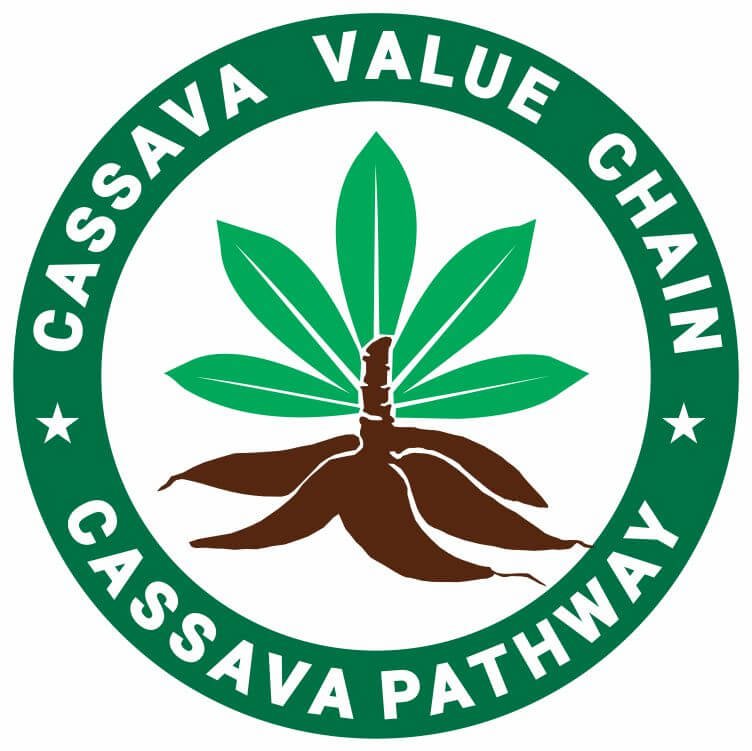Tapioca waffles aren’t here to play nice, chewy, crisp, and gluten-free; they flip the script on breakfast and dare your syrup to keep up.
They aren’t just another gluten-free trend, but are a full-on rebellion against boring breakfasts.
Made from cassava-root-derived tapioca flour, they slip seamlessly into grain-free, paleo, and gluten-sensitive diets without sacrificing flavor or satisfaction.
Their chewy interiors and crisp edges deliver a texture that’s anything but ordinary, giving each bite a layered, indulgent feel.
Whether you lean sweet or savory, tapioca waffles shape-shift with ease, holding up just as well under fresh berries and syrup as they do under sautéed greens and poached eggs.
This isn’t a compromise; it’s a blank slate for flavor, redefined.
As more people ditch wheat for feel-good alternatives, tapioca waffles are stepping into the spotlight, offering a mouthfeel that’s light yet hearty, and a taste experience that’s everything but expected.
Table of Contents
- What Are Tapioca Waffles?
- Tapioca Flour vs Cassava Flour in Waffles
- Ingredients for Basic Tapioca Waffles
- How to Make Tapioca Waffles
- Texture and Flavor Profile
- Serving Ideas and Toppings
- Storage and Reheating Tips
- Conclusion
- Frequently Asked Questions
What Are Tapioca Waffles?
Tapioca waffles, different from cassava flour waffles, are crisp-edged, chewy-centered waffles made using tapioca flour, a refined starch extracted from the root of cassava. Unlike traditional wheat-based waffles, they cater to gluten-free, grain-free, and paleo diets without compromising texture or taste.
Their standout feature is the contrast between a golden, crunchy exterior and an elastic, chewy interior, making them an enjoyable and satisfying option for breakfast or snacks.
This unique structure holds up well under both sweet and savory toppings, from fresh fruits and syrups to cheese, herbs, or sautéed vegetables.
Free from gluten and common allergens, tapioca waffles are a go-to for individuals with sensitivities or dietary restrictions.
Tapioca Flour vs Cassava Flour in Waffles
Trying to decide between tapioca flour and cassava flour for your waffles?
Both come from the same root, but the texture, weight, and feel they bring to your batter are different.
Tapioca Flour: Crisp on the Outside, Chewy in the Middle
If you want waffles with a golden crust and a chewy bite, tapioca flour is your go-to.
It’s a refined starch pulled from just the starchy part of the cassava root.
That extra processing gives it a powdery, silky finish that mixes smoothly into your batter.
The result? Light, airy waffles that hold their shape and crisp up beautifully.
You’ll get that satisfying chew without feeling weighed down, making it perfect for gluten-free mornings that still feel indulgent.
Cassava Flour: A Heartier, Bread-Like Waffle
Cassava flour gives you something different. It’s ground from the whole root, so it keeps more fiber and density.
That makes your waffles feel more like a soft, chewy flatbread than a crisp breakfast bite. The flavor is a bit earthier, too, and the texture leans heavier.
If you’re craving a waffle that can handle thick toppings like eggs, avocado, or even pulled chicken, cassava flour gives you a sturdy base to build on. More on cassava flour waffles here.
Which One Should You Use?
It all depends on the texture you want. Use tapioca flour when you’re craving that crispy edge and chewy center.
Choose cassava flour when you want a thicker, breadier waffle that holds up under a pile of savory toppings.
You can even mix both for a custom blend. Try each one and see what your waffle iron and your taste buds prefer.
Related Posts
Tapioca Recipes for Breakfast Ideas
Gluten-Free Tapioca Pancakes You Can Make in Minutes
What Are Tapioca Chips? Everything to Know
Tasty, Chewy Tapioca Snacks from Cassava Starch
Ingredients for Basic Tapioca Waffles
Making tapioca waffles starts with the right ingredients. Each one plays a role in how your waffles turn out, crispy, chewy, light, or rich.
Here’s what you’ll need and why it matters.
Tapioca Flour: The Base of Your Waffle Batter
Tapioca flour is what gives these waffles their signature chew and stretch.
It’s made from the starchy part of the cassava root and brings a light, elastic feel that mimics gluten-based batters.
Without it, you won’t get that crisp edge or soft interior. Always make sure to measure it properly and sift if needed to avoid lumps in your mix.
Eggs: For Structure, Lift, and Flavor
Eggs hold everything together. They also help your waffles puff slightly and give them a tender bite.
You’ll notice a richer taste and better structure with eggs in the mix.
If you’re going egg-free, a flaxseed or chia substitute might work, but you’ll lose some of that airy lightness.
Milk or Dairy-Free Substitute: Adds Moisture and Balance
You need liquid to bring the batter together, and milk does more than just that. It adds flavor and helps with browning.
If you’re dairy-free, almond, oat, or coconut milk all work. Just choose one that matches the flavor you’re aiming for: oat milk for neutral, coconut for a tropical twist.
Baking Powder: Helps the Waffles Rise
Even though tapioca flour doesn’t contain gluten, baking powder gives the batter just enough lift.
Your waffles won’t rise like those made with wheat, but this little boost prevents them from turning out dense.
Mix it evenly so the lift is consistent from edge to center.
Salt: Balances Sweet and Savory Flavors
A small pinch of salt changes everything. It sharpens the taste of every ingredient and keeps your waffles from tasting flat.
Whether you’re going sweet or savory, don’t skip it. Salt also makes the crust crisp up a little more, which gives you a better bite.
Oil or Melted Butter: For a Crispy Edge and Moist Center
Fat is key. It keeps the batter smooth and helps the waffles cook up with crisp edges while staying moist inside.
You can use neutral oils like avocado or melted butter if you want more flavor.
Either way, it keeps your waffles from sticking and adds richness.
Optional Add-Ins: Sugar and Spices for Flavor
Want a sweeter waffle? Add a spoonful or two of sugar. Going for warm, cozy notes? Stir in cinnamon or vanilla.
These extras aren’t required, but they turn basic batter into something memorable.
You can also experiment with nutmeg, cardamom, or cocoa, depending on your mood.
How to Make Tapioca Waffles
Making tapioca waffles is simple and satisfying. You don’t need fancy tools or hard-to-find ingredients, just a few steps, a hot waffle iron, and you’re on your way.
Mix the Dry Ingredients: Start with Tapioca Flour and Salt
In a medium bowl, add your tapioca flour and a pinch of salt. This base gives your waffles their signature chew and helps balance the final flavor.
Stir to combine, breaking up any clumps.
If you’re planning to add spices like cinnamon or a little sugar, this is the time to mix them in so they spread evenly throughout your batter.
Whisk the Wet Ingredients: Eggs and Water Come First
In a separate bowl, crack your eggs and pour in the water. Use a whisk to beat the mixture until smooth.
You’re aiming for a silky texture without streaks of egg. Want a little extra flavor?
Add a splash of vanilla or a touch of melted butter. Keep it simple or build flavor right from the start.
Combine Wet and Dry: Stir Slowly to Avoid Lumps
Slowly pour the egg mixture into the tapioca flour blend. Stir gently but thoroughly until everything comes together into a smooth batter.
Tapioca flour thickens quickly, so take your time and make sure there are no dry spots or pockets of flour.
The smoother your batter, the better the texture of your finished waffles.
Let the Batter Rest: Give It 15 to 20 Minutes
Don’t skip this step. Letting your batter rest gives the tapioca time to absorb the liquid and thicken slightly.
This short pause helps you get that balance between crisp edges and a soft, chewy center.
While the batter rests, plug in your waffle iron and let it heat up completely.
Preheat and Grease: Get the Waffle Iron Ready
A hot waffle iron makes all the difference. Lightly grease the plates with oil or cooking spray to keep the waffles from sticking.
Once the iron is fully preheated, it’s ready to go. The batter should be thick but pourable.
If it feels too stiff, you can add a splash of water to loosen it.
Cook the Waffles: Pour, Spread, and Wait
Spoon the batter into the center of the hot waffle iron. Use just enough to reach the edges without overflowing.
Close the lid and let it cook for 3 to 5 minutes, depending on your waffle maker.
You’re looking for a golden brown crust and a firm texture. Avoid opening the lid too early to keep the waffles from tearing.
Serve Fresh: Top Them How You Like
Once they’re done, lift the waffles out carefully and serve them hot. You can go sweet with fruit, syrup, or a drizzle of honey.
For a savory twist, try herbs, cheese, or fried eggs on top.
However you dress them, tapioca waffles are best eaten right away, crispy, warm, and full of flavor.
Texture and Flavor Profile
Tapioca waffles stand out for their chewy interior and crispy outer layer, thanks to the use of tapioca flour.
This combination gives them a pleasant bounce when bitten and a golden crust that holds firm under various toppings.
The texture contrasts make each bite satisfying, whether you’re enjoying them sweet or savory.
Their mild flavor pairs well with fruits, syrups, herbs, or proteins, making them a flexible choice.
Unlike traditional waffles, they maintain structure without turning soggy.
Perfect for breakfast, dessert, or light meals, tapioca waffles offer a gluten-free option that doesn’t compromise on taste or feel.
Their stretchiness and crunch deliver an enjoyable eating experience that fits into many dietary preferences and mealtime routines.
Serving Ideas and Toppings
Tapioca waffles give you a soft, chewy bite with crisp edges that can go sweet or savory.
Their mild flavor and gluten-free base make them easy to pair with anything you’re craving.
Fresh Fruits and Syrup: For a Naturally Sweet Start
You can’t go wrong with a handful of berries and a drizzle of syrup. Strawberries, blueberries, and raspberries all pair well with the light texture of tapioca waffles.
Add a spoonful of honey or maple syrup to bring out the natural flavors.
If you want more balance, a scoop of plain or vanilla yogurt adds a creamy layer that softens the sweetness and gives it a bit more body.
Melted Cheese and Avocado: A Comforting Savory Combo
Warm waffles with melted cheddar or feta bring a savory twist that feels cozy and filling.
Slice up a ripe avocado and layer it over the top for creaminess and healthy fats.
You can sprinkle in herbs like chives or black pepper for an added punch.
This pairing works especially well for a quick lunch or a relaxed weekend brunch.
Eggs and Smoked Meats: Build a Satisfying Meal
Top your tapioca waffle with a poached or sunny-side-up egg, and let the yolk run into every bite.
Add slices of crispy bacon or thin-cut ham for a protein-rich plate that keeps you full longer.
The chewy waffle base holds everything without getting soggy, giving you a solid, mess-free dish that feels like comfort food done right.
Sandwich Style: Turn Waffles into a Handheld Favorite
Try using two waffles as sandwich bread. Stack them with grilled vegetables, chicken, or deli meats for a gluten-free option that’s both filling and easy to eat.
The light chew and crisp edges hold the fillings without falling apart.
It’s a fun way to switch up lunch, especially when you’re tired of regular bread.
Sweet and Spiced: Add Cinnamon, Nuts, or Chocolate
If you like a more indulgent waffle, sprinkle in cinnamon or cocoa powder before cooking.
Top with sliced bananas, crushed nuts, or a bit of dark chocolate. You can even swirl in peanut butter or almond butter for a richer taste.
These toppings turn a basic waffle into a dessert you can feel good about.
Storage and Reheating Tips
To keep your tapioca waffles fresh, let them cool completely before storing them in an airtight container.
This helps prevent moisture from softening the texture.
For longer storage, freeze them with parchment paper between each layer, then seal in a freezer-safe bag.
Properly stored, they can last up to three months. When reheating, use a toaster or oven at 350°F for 5 to 7 minutes to restore crispness.
For frozen waffles, increase the time to 10 to 12 minutes.
If you’re short on time, microwaving for 30 seconds works, though the texture may turn softer.
These simple steps help preserve both flavor and structure, so you can enjoy gluten-free tapioca waffles anytime without losing their original appeal.
Conclusion
Tapioca waffles aren’t here to follow rules; they’re here to change them.
With their gluten-free base, chewy centers, and crisp edges, they make breakfast, lunch, or even snack time more fun, more inclusive, and far more satisfying.
You don’t need to compromise texture or taste just because you’ve ditched wheat.
Whether you like them sweet with fruit or savory with eggs and avocado, these waffles are as flexible as your cravings.
And if you’re meal prepping? They store and reheat like a dream.
Tapioca waffles do more than fill a plate; they redefine what waffles can be.
So heat that iron and give your old breakfast routine a bold, chewy upgrade.
Frequently Asked Questions
Are tapioca waffles gluten-free?
Yes, tapioca waffles are naturally gluten-free because they’re made from tapioca flour, which comes from the cassava root and contains no wheat, barley, or rye.
Do tapioca waffles taste sweet or savory?
Tapioca waffles have a mild, neutral flavor. They absorb the flavor of toppings easily, so they work well with sweet options like fruit or savory ones like cheese.
Can you freeze tapioca waffles?
Absolutely. Let them cool, layer with parchment paper, and freeze in a sealed container. They can stay fresh in the freezer for up to three months.
How do I reheat tapioca waffles for the best texture?
Use a toaster or oven at 350°F for 5 to 7 minutes. This keeps the edges crispy and the inside soft and chewy, just like freshly made.
References

Chimeremeze Emeh is a writer and researcher passionate about Africa’s most transformative root crop—cassava. Through his work at cassavavaluechain.com, he explores the entire cassava industry, from cultivation and processing to its diverse applications in food, health, and industrial use.
He also writes for palmoilpalm.com, where he shares his extensive experience and deep-rooted knowledge of palm oil, covering red palm oil, palm kernel oil, and refined products. His work there reflects his lifelong connection to agriculture and his commitment to promoting sustainable value chains in Africa.
Driven by curiosity and purpose, Chimeremeze aims to shed light on how cassava continues to empower communities, strengthen food systems, and link traditional farming wisdom with modern innovation.

